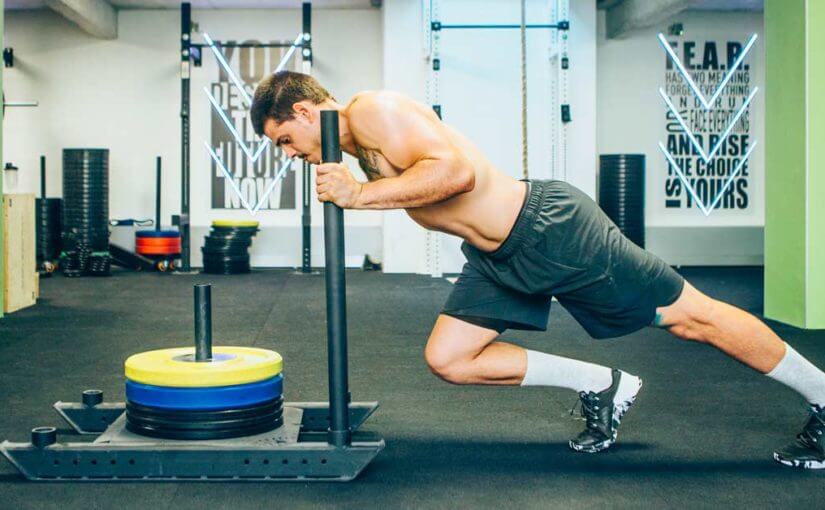
Ultimate 4-Week Full Body Fitness Program: Tone, Strengthen, and Energize is a comprehensive workout program designed to improve overall health and fitness. This 4-week program focuses on muscle building, strength enhancement, and endurance to make the body more flexible and energetic.
Part 1: Week 1 & 2 – Foundation Building
The first two weeks of the Ultimate 4-Week Full Body Fitness Program aim to establish a strong foundation for fitness enthusiasts. This phase is crucial as it sets the tone for the subsequent weeks by introducing fundamental exercises targeting various muscle groups while gradually improving endurance and core strength.
Week 1:
Day 1 – Full Body Strength Training:
- Squats (3 sets x 12 reps): Squats are a fundamental lower body exercise targeting quadriceps, hamstrings, and glutes. Proper form is vital for effective results and to prevent injuries.
- Push-ups (3 sets x 10 reps): A classic compound exercise engaging the chest, shoulders, triceps, and core. It also helps in improving upper body strength.
- Bent-over Rows (3 sets x 12 reps): This exercise strengthens the back muscles, particularly the lats and rhomboids, promoting a balanced physique.
- Plank (3 sets x 30 seconds): Plank exercises engage the core muscles, enhancing stability and promoting good posture.
- Lunges (3 sets x 10 reps each leg): Lunges target the lower body muscles, including the quadriceps, hamstrings, and glutes, improving balance and leg strength.
- Bicycle Crunches (3 sets x 15 reps each side): An effective core exercise engaging both the upper and lower abs.
Day 3 – Cardio and Core:
- Jogging/Running (20 minutes): Cardiovascular exercises help improve heart health and burn calories.
- Russian Twists (3 sets x 15 reps each side): This exercise targets obliques, enhancing core strength and stability.
- Mountain Climbers (3 sets x 20 reps): A full-body exercise that improves cardiovascular fitness, core strength, and agility.
- Jumping Jacks (3 sets x 30 seconds): A simple yet effective exercise to elevate heart rate and improve cardiovascular endurance.
Day 5 – Total Body Stretch and Recovery:
- Yoga or Pilates (30 minutes): These flexibility-focused exercises aid in relaxing muscles, improving flexibility, and promoting mental relaxation.
- Dynamic stretching exercises focusing on major muscle groups: Dynamic stretching helps improve blood circulation and flexibility, reducing the risk of injury.
- Deep breathing and relaxation techniques: Incorporating relaxation techniques helps in reducing stress levels and enhancing overall well-being.
Week 2:
Day 2 – Upper Body Emphasis:
- Bench Press or Push-ups (3 sets x 10 reps): This exercise targets the chest, shoulders, and triceps, enhancing upper body strength.
- Pull-ups or Lat Pulldowns (3 sets x 8 reps): Pull-ups or lat pulldowns work the back muscles, promoting a balanced upper body.
- Shoulder Press (3 sets x 12 reps): Strengthening the shoulder muscles helps in enhancing posture and stability.
- Triceps Dips (3 sets x 10 reps): An isolation exercise targeting the triceps, improving arm strength.
- Bicep Curls (3 sets x 12 reps): Working the biceps, this exercise contributes to balanced arm development.
Day 4 – HIIT and Core:
- High-Intensity Interval Training (HIIT) (30 seconds work, 20 seconds rest – repeat for 15 minutes): HIIT elevates heart rate, burns calories, and improves cardiovascular fitness.
- Plank Variations (Side Planks, Forearm Planks – 3 sets x 30 seconds): Plank variations engage different core muscles, enhancing core strength and stability.
- Leg Raises (3 sets x 12 reps): Leg raises target the lower abs, contributing to a stronger core.
Day 6 – Active Recovery and Flexibility:
- Light Cardio (Brisk Walk or Cycling) (20-30 minutes): Active recovery exercises promote blood circulation and facilitate muscle recovery.
- Foam rolling or self-myofascial release techniques: These aid in muscle recovery and reducing muscle soreness.
- Static stretching to improve flexibility: Stretching after workouts helps in maintaining flexibility and preventing injuries.
This breakdown covers the exercises and routines for the first two weeks of the “Foundation Building” phase in the Ultimate 4-Week Full Body Fitness Program. These routines are designed to introduce participants to a comprehensive range of exercises targeting various muscle groups, core strength, flexibility, and cardiovascular health.

Part 2: Week 3 & 4 – Intensify and Strengthen
The third and fourth weeks of a workout program are often focused on increasing intensity and building strength. This phase emphasizes challenging workouts to push beyond comfort zones and achieve higher fitness levels. Exercises are typically modified or intensified to stimulate muscle growth, improve endurance, and enhance overall fitness.
Week 3:
Day 1 – Lower Body Power:
The focus is on power exercises that engage the lower body muscles:
- Deadlifts (3 sets x 8 reps): An effective compound exercise targeting multiple muscle groups, particularly the glutes, hamstrings, and lower back.
- Box Jumps (3 sets x 10 reps): Enhances explosive power and lower body strength.
- Leg Press (3 sets x 12 reps): Strengthens leg muscles with a focus on quads, hamstrings, and glutes.
- Calf Raises (3 sets x 15 reps): Targets the calf muscles, crucial for stability and balance.
Day 3 – Cardiovascular Endurance:
The emphasis here is on improving cardiovascular health and endurance:
- Running (25-30 minutes at a moderate pace): Enhances cardiovascular fitness and burns calories.
- Jump Rope (3 sets x 1 minute): Enhances agility, coordination, and cardiovascular endurance.
- Russian Twists (3 sets x 15 reps each side): Engages the core muscles for stability and strength.
- Plank Variations (3 sets x 45 seconds): Focuses on core stability and endurance.
Day 5 – Strength and Stability:
Focuses on enhancing strength and stability through various exercises:
- Stability Ball Exercises (3 sets x 12 reps): Utilizes stability balls for core engagement and overall stability.
- Dumbbell or Kettlebell Swings (3 sets x 15 reps): Engages multiple muscle groups, particularly the lower back, glutes, and hamstrings.
- Renegade Rows (3 sets x 10 reps each arm): Strengthens the back, shoulders, and arms.
Week 4:
Day 2 – Full Body Supersets:
The emphasis is on performing exercises back-to-back with minimal rest to maximize intensity:
- Squat & Press (3 sets x 10 reps): Combines lower body and shoulder exercises for full-body engagement.
- Renegade Rows & Push-ups (3 sets x 12 reps): Engages multiple muscle groups, particularly the upper body and core.
- Lunges & Bicep Curls (3 sets x 10 reps each leg/arm): Focuses on legs and arms simultaneously.
Day 4 – Circuit Training:
Engages in a circuit-style workout for an effective full-body workout:
- Circuit: 45 seconds exercise, 15 seconds rest (repeat 3-4 circuits): Utilizes high-intensity exercises like burpees, mountain climbers, jumping lunges, and planks.
Day 6 – Active Recovery and Reflection:
Focuses on gentle recovery exercises and mental preparation:
- Light Yoga or Tai Chi (30 minutes): Aids in recovery, relaxation, and mental focus.
- Reflect on progress, relaxation techniques, and mental preparation: Helps in assessing progress and mental relaxation.
This overview outlines a general approach to the “Week 3 & 4 – Intensify and Strengthen” phase of a full-body workout plan, aiming to intensify workouts, build strength, and improve endurance. Remember, specific exercises, sets, and reps may vary based on individual fitness levels and goals. Always prioritize proper form, listen to your body, and seek guidance from fitness professionals when needed.

Part 3: Program Highlights
Key Highlights of the Program:
1. Progressive Overload:
The program continues to employ the principle of progressive overload, ensuring that the body constantly faces challenges and stimuli to promote adaptation and growth. This involves incrementally increasing the intensity, duration, or complexity of exercises to continually challenge the body.
2. Compound Exercises:
Emphasis remains on compound movements that engage multiple muscle groups simultaneously. Compound exercises like squats, deadlifts, bench presses, and pull-ups are fundamental in maximizing efficiency by working numerous muscles at once, resulting in more significant strength gains and calorie expenditure.
3. Periodization:
The workout plan may incorporate periodization techniques to vary the intensity and focus of workouts within specific time frames. This method can include cycles of high-intensity workouts followed by periods of lighter workouts or recovery. Periodization helps prevent plateaus and keeps the body adaptable.
4. Targeted Muscle Groups:
The workouts concentrate on different muscle groups on different days, ensuring adequate rest and recovery for each group. This prevents overtraining while allowing specific muscles to recuperate, repair, and grow, contributing to overall strength and balance.
5. Strength and Endurance Balance:
Balancing strength training with cardiovascular exercises maintains a harmonious approach to fitness. While strength training builds muscle mass and strength, cardiovascular workouts promote heart health, endurance, and calorie expenditure.
6. Flexibility and Mobility:
Routine flexibility exercises are integral in preventing injuries, improving range of motion, and enhancing overall athletic performance. Dynamic and static stretching incorporated into the routine maintains or improves flexibility, aiding in recovery and injury prevention.
7. Recovery and Regeneration:
Active recovery days and techniques are scheduled strategically to allow the body time to rest and recover adequately. Practices such as foam rolling, yoga, or light activities facilitate recovery by reducing muscle tension and aiding in circulation.
8. Monitoring and Adjustments:
Continuous evaluation of progress is essential. The plan may incorporate techniques for self-monitoring, such as keeping a workout journal, tracking performance metrics, or using wearable fitness devices. Based on these evaluations, adjustments in the workout routine can be made to better align with goals and performance.

Important Notes:
Before starting the program, remember that safe and effective workouts need to be combined with a balanced diet. Additionally, listening to your body and proper rest are crucial parts of the workout routine.
Try to create a workout program that suits your specific body type, and always adhere to the guidance of a professional trainer for optimal results.
You can expand on this content by providing more detailed information about each step in the workout program, specific exercises, schedules, and the rationale behind why they’re designed to deliver the best results for participants.
Source: Admin compiled from the Internet





















